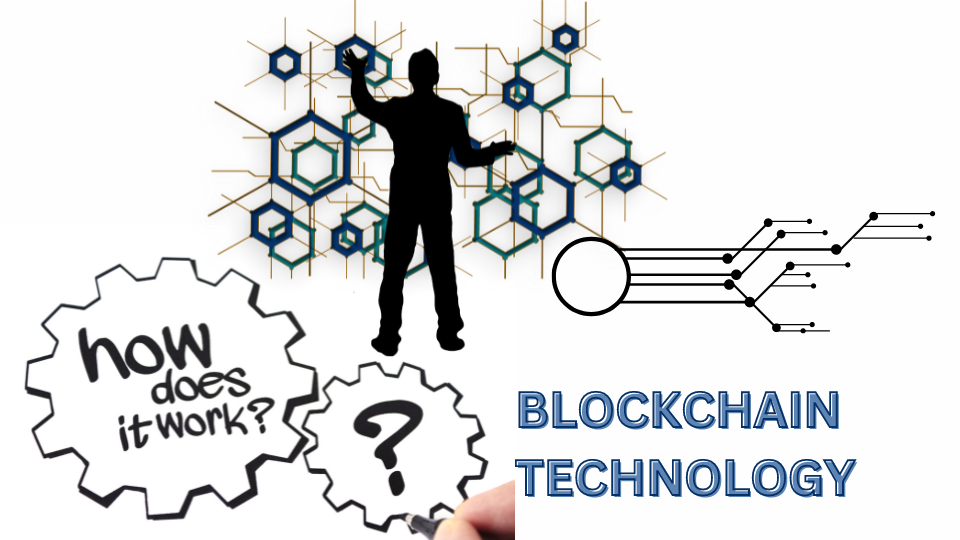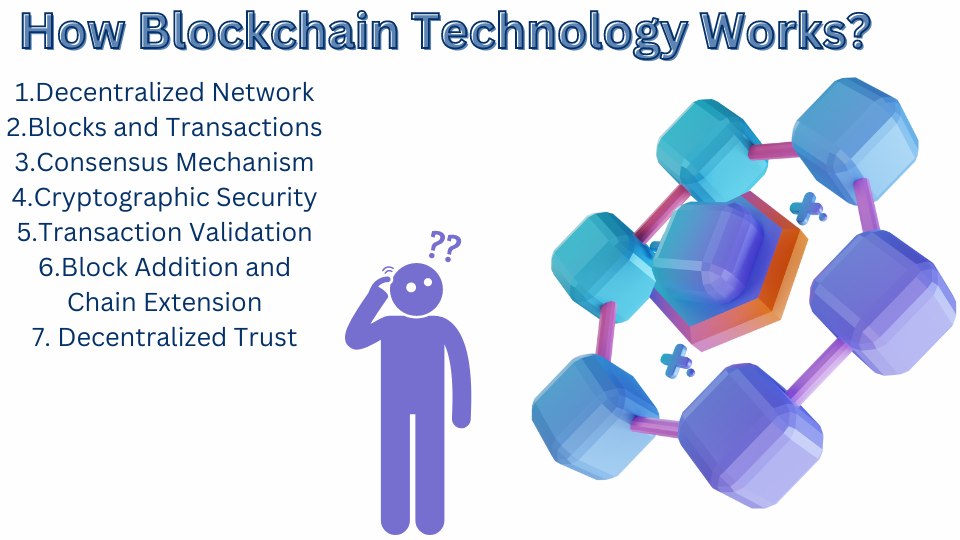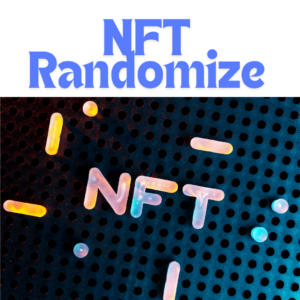
Blockchain technology work on a decentralized and consist of a distributed ledger system. Let’s move toward its key components and working process.

1. Decentralized Network
Blockchain work on a denoting network which consist of many nodes (computers) that have a copy of the all blockchain ledger. This decentralized architecture remove the use for a central main authority, such as a bank or government etc, to validate the transactions.
2. Blocks and Transactions
Transactions are stored on the blockchain in batches these batches are called “blocks.” Each block consist of a list of transactions and a reference which represent to the previous block, and this way of processes forming a chronological chain of all the blocks.
3. Consensus Mechanism
Consensus algorithms make sure the contract among all the network nodes on the validity of transactions which added to the blockchain technology. Common consensus mechanisms which have Proof of Stake, Proof of Work, and many variations like Delegated Proof of Stake and Practical Byzantine Fault Tolerance etc.
4. Cryptographic Security
Blockchain uses today’s cryptographic techniques to safe the data and verify the transactions. Each transaction is digitally signed to make sure tits authenticity, and cryptographic hash functions which is used to generate unique identifiers for blocks, and making them tamper-resistant.
5. Transaction Validation
When a new transaction is done, it is showed on the network for the validation. The Nodes present in the network verify the transaction’s validity which based on the predefined rules and then reach consensus on its inclusion in the next block system.
6. Block Addition and Chain Extension
Once validated, the new block is added to the block chain by using the network nodes. Each block represents the previous one block by its cryptographic hash, by generating an immutable chain of blocks that stored the transactional history.
7. Decentralized Trust
Block chain do not need a central authority as it have decentralized nature and cryptographic security which ensure trust and transparency without depending on a central authority. This makes block chain more preferable for many applications which need secure and auditable transactions, such as supply chain tracking, financial transactions, and identity verification.
Conclusion
In the bottom line, block chain technology provide a decentralized networks, cryptographic security, and consensus mechanisms to create more accurate, transparent, secure, and immutable digital ledgers. Its innovative technique to manage data and transactional processing has the potential to transform the industries and regain the trust in digital interactions.






5 thoughts on “How Does Blockchain Technology Work”